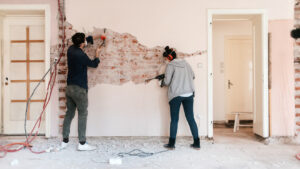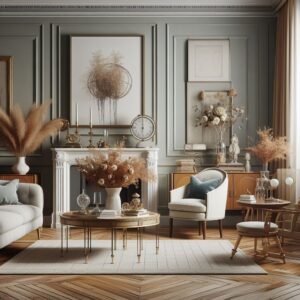Reviving Retro: Nostalgia and Vintage Influences in Modern Design
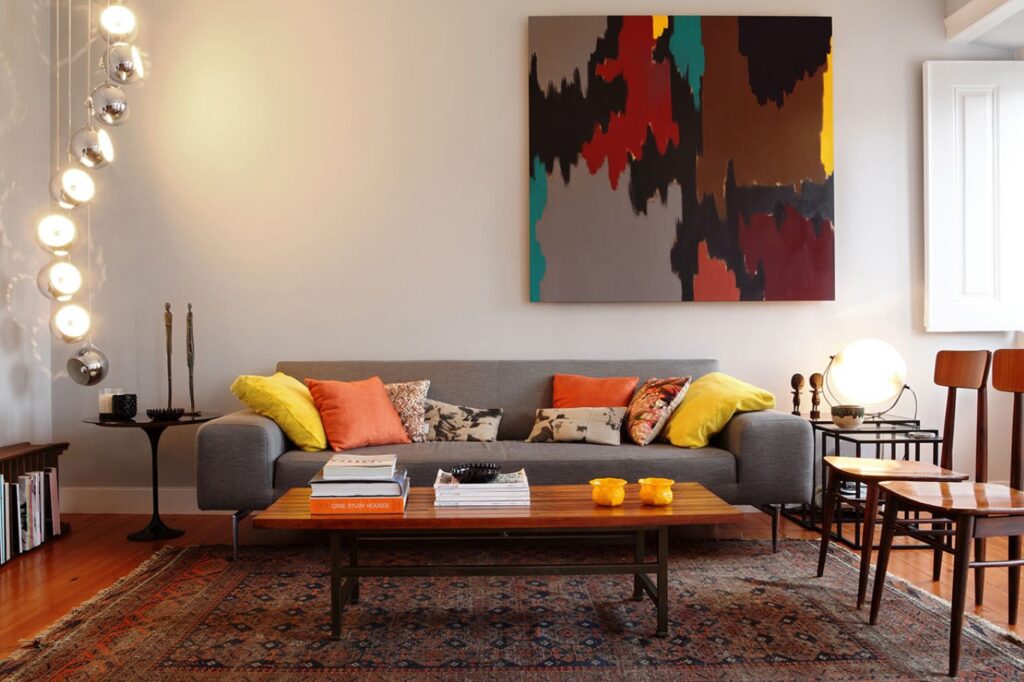
In the realm of modern design, there exists a palpable yearning for the aesthetics of yesteryears. This revival of retro sensibilities is not merely a passing trend but rather a deliberate embrace of the past. Nostalgia, with its potent allure, has permeated various facets of contemporary design, from fashion to interior decor and beyond. The appeal lies in the inherent charm and authenticity of vintage influences, offering a refreshing departure from the sleek minimalism that once dominated the design landscape. Just as designers infuse modern spaces with vintage charm, loan origination software for private money lenders infuses traditional lending processes with digital efficiency, reflecting a timeless fusion of the past and the present.
The resurgence of retro design can be attributed to several factors, chief among them being the cyclical nature of trends. What was once deemed outdated eventually circles back into vogue, albeit with a modern twist. Additionally, in an era characterized by rapid technological advancements and constant innovation, there exists a longing for the simplicity and timelessness of bygone eras. Retro design serves as a visual reminder of a simpler time, evoking feelings of nostalgia and comfort in an increasingly fast-paced world.
Moreover, the popularity of retro design can be attributed to its versatility and adaptability to contemporary settings. Designers often draw inspiration from iconic styles of the past, such as mid-century modernism or Art Deco, and reinterpret them for the present day. This fusion of old and new results in eclectic spaces that blend vintage charm with modern functionality, appealing to a wide audience seeking both familiarity and innovation.
Water heater repair in Deerfield Beach can be a crucial aspect of reviving retro homes, ensuring that vintage-inspired designs are functional and efficient.
Aesthetic Resurgence
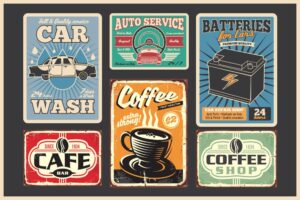
One of the most striking aspects of retro design is its emphasis on aesthetics that transcend time. Vintage-inspired elements, characterized by their distinct shapes, colors, and textures, add depth and character to modern interiors. From bold geometric patterns reminiscent of the 1960s to the understated elegance of Art Nouveau motifs, each era brings its unique visual language to contemporary design.
The resurgence of retro aesthetics has also been fueled by the rise of sustainable practices and eco-conscious consumerism. In an age where environmental concerns loom large, there is a growing appreciation for the craftsmanship and durability of vintage pieces. Upcycling and repurposing have become prevalent trends, with designers breathing new life into old furniture and accessories, thereby reducing waste and promoting sustainable living.
Did you know that the biggest collector and enthusiast is the one who buys 45 records, seeking to relive the nostalgia of vinyl records and vintage music? Just as retro design elements evoke feelings of nostalgia and charm in modern interiors, the resurgence of interest in 45 records reflects a broader appreciation for vintage culture and its enduring appeal.
Furthermore, the allure of retro aesthetics extends beyond the realm of design and into popular culture. Film, television, and music often serve as sources of inspiration, with nostalgic references permeating various aspects of contemporary media. This interplay between design and culture creates a symbiotic relationship, reinforcing the enduring appeal of vintage influences in modern society.
Bridging the Generational Divide
One of the most fascinating aspects of retro design is its ability to bridge the generational divide, appealing to both younger and older demographics alike. For older generations, retro design evokes memories of their youth, serving as a nostalgic trip down memory lane. Conversely, younger audiences are drawn to the timeless appeal and distinctiveness of vintage aesthetics, which offer a sense of authenticity often lacking in mass-produced goods.
Just like retro design elements evoke feelings of nostalgia, taking a CDL refresher course in Orlando can bring back memories of past experiences behind the wheel.
Moreover, retro design fosters a sense of connection and continuity across generations, as younger individuals rediscover and reinterpret the styles of their predecessors. This intergenerational exchange not only preserves the cultural heritage embodied in retro design but also ensures its continued relevance and evolution in the years to come.
In essence, the revival of retro design signifies more than just a fleeting trend; it embodies a collective longing for authenticity, nostalgia, and timeless elegance in an ever-changing world. By embracing the past while looking toward the future, designers and consumers alike can create spaces that resonate with meaning and evoke emotions that transcend generations.
If you’re looking to infuse your modern home with vintage charm, consider incorporating drywall texturing in Orlando, FL, to add depth and character to your walls.
Innovative Applications
Beyond its role as a mere aesthetic trend, retro design has found innovative applications in various industries, pushing the boundaries of creativity and imagination. One such area is technology, where designers are incorporating vintage elements into modern gadgets and devices, creating a harmonious blend of past and present. From retro-inspired smartphones with rotary dials to sleek laptops adorned with Art Deco motifs, these products offer a nostalgic twist on cutting-edge technology, appealing to consumers seeking both style and functionality.
Moreover, the resurgence of retro design has extended to the realm of architecture, with architects and urban planners drawing inspiration from historical styles to create contemporary structures that pay homage to the past. This trend is particularly evident in the revival of Art Deco and Bauhaus architecture, characterized by their bold geometric forms and ornate detailing. By integrating these elements into modern buildings, designers can infuse spaces with a sense of timelessness and sophistication, while still meeting the demands of 21st-century living.
If you’re considering a living room redesign that blends modern and vintage elements seamlessly, reaching out to the top living room interior designer in Lighthouse Point, FL, is essential for ensuring a successful outcome.
Cultural Impact
The revival of retro design has had a profound cultural impact, influencing not only the way we perceive aesthetics but also our collective memory and identity. Through its exploration of past styles and motifs, retro design serves as a visual archive of cultural heritage, preserving and celebrating the diverse influences that have shaped our society over the years. From the glamorous Art Deco cinemas of the 1920s to the psychedelic posters of the 1960s, each era leaves its indelible mark on the cultural landscape, providing inspiration for future generations to come.
Furthermore, retro design has become intertwined with the concept of nostalgia, eliciting fond memories and emotions associated with bygone eras. In an age of rapid change and uncertainty, the familiar comforts of retro aesthetics offer a sense of stability and continuity, grounding us in our shared cultural history. This nostalgia-driven revival transcends geographical boundaries and generational divides, uniting people from diverse backgrounds in their appreciation for the timeless appeal of vintage design.
Reviving retro aesthetics in modern design goes hand in hand with maintaining pristine outdoor spaces through reliable lawn care in Green Bay. Just as vintage-inspired interiors evoke a sense of nostalgia and timeless elegance, well-tended lawns contribute to the overall aesthetic appeal of a property.
Educational Opportunities
The resurgence of retro design presents unique educational opportunities for designers, historians, and enthusiasts alike, fostering a deeper understanding and appreciation of design history and theory. By studying the evolution of styles and movements from the past, aspiring designers can gain valuable insights into the principles of form, function, and aesthetics, which continue to influence contemporary design practices.
Moreover, retro design provides a rich source of inspiration for design educators, who can incorporate historical references into their curriculum to stimulate creativity and critical thinking. By examining the social, cultural, and technological contexts that gave rise to different design movements, students can develop a more nuanced understanding of the role of design in shaping human experiences and identities.
Much like how retro designs evoke feelings of nostalgia while incorporating contemporary elements, AI course creator for teachers enables teachers to blend traditional teaching approaches with modern advancements, resulting in dynamic and effective educational experiences for their students.
Sustainable Solutions
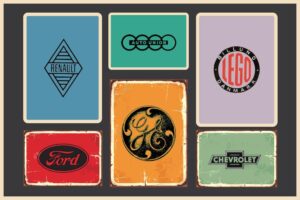
In an era marked by growing concerns over environmental sustainability, retro design offers innovative solutions to the challenges of resource depletion and waste accumulation. By repurposing and upcycling vintage materials and furnishings, designers can reduce the demand for new resources and minimize the environmental impact of production processes. This emphasis on sustainability not only promotes responsible consumption but also encourages a shift towards a more circular economy, where resources are reused and recycled to minimize waste.
Furthermore, the durability and longevity of retro design contribute to its sustainability credentials, as vintage pieces are often built to last for generations. Unlike their mass-produced counterparts, which are designed for obsolescence, retro furnishings and accessories are crafted with care and attention to detail, ensuring their continued relevance and usability over time. By investing in timeless pieces with a rich history, consumers can reduce their ecological footprint while adding character and personality to their living spaces.
Much like how designers draw inspiration from the past to create timeless interiors, for sale sign installation service ensures that retro-themed homes receive the visibility they need in the competitive housing market.
Cultural Revival
The revival of retro design has sparked a cultural renaissance, breathing new life into forgotten styles and traditions while fostering a sense of pride and nostalgia in local communities. In cities around the world, grassroots movements are reclaiming neglected landmarks and revitalizing historic neighborhoods, preserving the architectural heritage of the past for future generations to enjoy.
Moreover, the resurgence of retro design has given rise to a thriving vintage market, where collectors and enthusiasts can discover hidden treasures from decades past. From mid-century modern furniture to vintage clothing and accessories, these curated collections offer a glimpse into the lifestyles and tastes of previous generations, allowing us to connect with the past in a tangible and meaningful way.
Technological Integration
The integration of retro design elements into modern technology has opened up new possibilities for creative expression and innovation, blurring the lines between the physical and digital worlds. In the realm of digital media, designers are experimenting with retro-inspired graphics and typography, drawing inspiration from vintage advertisements and signage to create immersive user experiences that evoke nostalgia and nostalgia-driven engagement.
Similar to how designers seamlessly integrate retro aesthetics into contemporary spaces, homeowners prioritize mosquitoes control in central New Jersey to seamlessly blend comfort and style, creating inviting environments that stand the test of time.
Moreover, virtual reality (VR) and augmented reality (AR) technologies are allowing users to explore virtual environments inspired by iconic retro settings, from 1950s diners to 1980s arcade parlors. By recreating these nostalgic spaces in digital form, developers can transport users back in time, allowing them to experience the sights, sounds, and sensations of bygone eras in a whole new way.
Cross-Cultural Influences
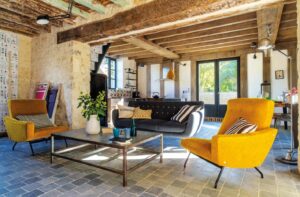
The resurgence of retro design has transcended cultural boundaries, inspiring designers and creatives from around the world to reinterpret and reimagine vintage aesthetics in their own unique way. From the vibrant colors and patterns of 1970s disco culture to the sleek lines and futuristic motifs of 1960s space-age design, each era offers its own distinct visual language that resonates with audiences on a global scale.
Moreover, the cross-cultural exchange facilitated by retro design has led to a rich tapestry of influences and inspirations, as designers draw inspiration from diverse sources to create hybrid styles and mashup aesthetics. This fusion of cultural references and traditions not only enriches the design landscape but also fosters a greater appreciation for the interconnectedness of global cultures and histories.
Working with a fence contractor in Cove Springs allows you to integrate classic fencing styles into your property, adding a touch of timeless elegance to your surroundings.
Future Prospects
As we look towards the future, the revival of retro design shows no signs of slowing down, with new generations of designers and consumers embracing the timeless appeal of vintage aesthetics in ever-evolving ways. From sustainable solutions to technological integration, the possibilities for innovation and creativity are endless, as retro design continues to inspire and influence the way we live, work, and play.
Moreover, as we confront the challenges of an increasingly digital and interconnected world, the tangible and tactile qualities of retro design offer a welcome respite from the relentless march of technology. Whether it’s the warmth of reclaimed wood or the patina of aged brass, retro furnishings, and accessories add a sense of authenticity and humanity to our living spaces, reminding us of the enduring power of design to shape our experiences and memories.
In conclusion, the revival of retro design represents more than just a passing trend; it embodies a timeless appreciation for craftsmanship, creativity, and cultural heritage that transcends generations and borders. By embracing the past while looking towards the future, designers and consumers alike can create spaces that are both aesthetically pleasing and emotionally resonant, enriching our lives in ways that defy the passage of time.
